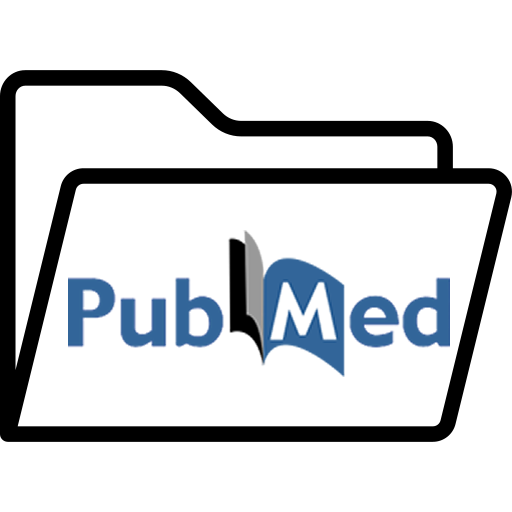İstanbul Medeniyet Üniversitesi Kurumsal Akademik Arşivi
DSpace@Medeniyet, İstanbul Medeniyet Üniversitesi tarafından doğrudan ve dolaylı olarak yayınlanan; kitap, makale, tez, bildiri, rapor, araştırma verisi gibi tüm akademik kaynakları uluslararası standartlarda dijital ortamda depolar, Üniversitenin akademik performansını izlemeye aracılık eder, kaynakları uzun süreli saklar ve üniversite adresli yayınların etkisini artırmak için telif haklarına uygun olarak Açık Erişime sunar.

Güncel Gönderiler
Error analysis of quantum operators written as a linear combination of permutations
(Springer, 2025) Daşkın, Ammar
In this paper, we consider matrices given as a linear combination of permutations and analyze the impact of bit and phase flips on the perturbation of the eigenvalues. When the coefficients in the linear combination are positive, we observe that the eigenvalues of the resulting matrices exhibit resilience to quantum bit-flip errors. In addition, we analyze the bit flips in combination with positive and negative coefficients and the phase flips. Although matrices with mixed-sign coefficients show less resilience to the bit-flip and phase-flip errors, the numerical evidence shows that the perturbation of the eigenspectrum is very small when the rate of these errors is small. We also discuss the situation when this matrix is implemented through block encoding and there is a control register. Since any square matrix can be expressed as a linear combination of permutations multiplied by two scaling matrices from the left and right (via Sinkhorn’s theorem), this paper gives a framework to study matrix computations in quantum algorithms related to numerical linear algebra. In addition, it can give ideas to design more error-resilient algorithms that may involve quantum registers with different error characteristics.
Reliability and validity of the Turkish version of the Diabetes Distress Scale for type 2 diabetes and distress levels of the participants
(Tubitak Scientific & Technological Research Council Turkey, 2020) Telci Caklili, Ozge; Alkaya Feyizoglu, Gunes; Tulu, Selcan; Dizman, Nazli; Bozkurt, Irem Sidika; Oğuz, Aytekin
Background/aim: Studies have shown an increased depression rate in patients with type 2 diabetes mellitus (T2DM) compared to the normal population. It is now acknowledged that patients suffer from distress rather than depression. Our aim was to validate the Turkish version of the Diabetes Distress Scale (DDS) and to show distress levels of the participants. Materials and methods: The scale was translated from English to Turkish by the authors and translated back to English. Between August 2015 and January 2016 all the patients who were referred to the T2DM Clinic of Istanbul Medeniyet University were screened, and eligible patients were recruited. For calculating internal consistency Cronbach's alpha coefficient was used. Results: A total of 205 patients [120 females (58.5%), 85 males (41.5%)] were included. Cronbach's alpha coefficient was 0.874, showing internal consistency. The Spearman Brown correlation coefficient was calculated between the first 9 and second 8 questions as 0.884. Thetotal variances were explained at a level of 66.2% with 4 factors. Sixty-three patients (30%) had a score of >= 3, indicating diabetic distress. Correlation analysis showed a significant correlation between total score and HbA1c levels (r = 0.152 and P = 0.038). Conclusion: The Turkish version of the DDS for type 2 diabetes is a reliable tool for assessment of distress levels.
Pyogenic granuloma and nodular Kaposi's sarcoma: dermoscopic clues for the differential diagnosis
(Tubitak Scientific & Technological Research Council Turkey, 2019) Elmas, Omer Faruk; Akdeniz, Necmettin; Acar, Emine Muge; Kilitci, Asuman
Background/aim: Pyogenic granuloma (PG)-like nodular Kaposi's sarcoma (KS) has been previously demonstrated in several studies. However, to the best of our knowledge, no original study investigating the dermoscopic differential diagnosis of PG and KS exists in the relevant literature. In this study we aimed to identify dermoscopic findings providing useful clues to differential diagnosis between the two entities. Materials and methods: Patients with histopathologically confirmed PG or nodular KS were included in the study. Demographic, clinical, dermoscopic, and histopathological findings of the cases were retrospectively reviewed. Results: The most common finding observed in PG was red structureless areas (80.00%), followed by intersecting thick white lines (56.66%), ulceration (36.66%), and collarette scale (33.33%). The most common findings detected in nodular KS were polychromatic structures (56.66%) and red (46.66%) and white (13.33%) structureless areas, respectively. Conclusion: Intersecting thick white lines seem to be the strongest dermoscopic clue to PG. Striate surface scaling (n = 6) was a novel finding identified for PG. Here we also described a new vascular pattern (widespread vessels composing a network) for nodular KS.
Factors associated with glomerular filtration rate variation in primary hyperparathyroidism after parathyroidectomy
(Tubitak Scientific & Technological Research Council Turkey, 2019) Çalışkan, Mustafa; Kizilgul, Muhammed; Beysel, Selvihan; Ucan, Bekir; Akcan, Fatih; Takır, Mümtaz; Ozbek, Mustafa
Background/aim: Prolonged hypercalcemia impairs renal function, and a reduced glomerular filtration rate (GFR) is typical in advanced primary hyperparathyroidism (PHPT). There are scarce data related to predictors of renal impairment in patients with PHPT. Hence, we aimed to evaluate changes in kidney function in PHPT patients after parathyroidectomy (PTX) and identify factors associated with GFR variation in these patients. Materials and methods: One hundred and twenty-five patients with PHPT who underwent surgery between 2012 and 2014 were enrolled in the study. Patients were divided into two groups according to GFR values: patients whose GER was lower than 60 mL/min/1.73 m(2) and higher than 60 mL/min/1.73 m(2). Demographic and laboratory parameters were compared before and 6 months after parathyroidectomy. Results: Prevalence of antihypertensive drug users and patients with renal cysts and parathormone (PTH) and alkaline phosphatase levels were higher in patients with GFR of >60 than in GFR of <60 mL/min/1.73 m(2) (P < 0.05). Systolic BP, uric acid, and magnesium were decreased in patients with GFR of >= 60 but GFR did not change in the two groups after parathyroidectomy. After parathyroidectomy, calcium and PTH decreased but 25(OH)D3 and phosphorus increased in the two groups. In multiple regression analysis, age, calcium, and baseline GFR were independent predictors of GFR variation. Parathyroid adenoma volume and urinary calcium were not independent predictors of GFR change. Conclusion: Older age, higher preoperative calcium, and GFR were factors associated with GFR increase in PHPT patients after parathyroidectomy. Further renal impairment was prevented by parathyroidectomy in PHPT patients.
Lipid profile, atherogenic indices, and their relationship with epicardial fat thickness and carotid intima-media thickness in celiac disease
(Kare Publ, 2019) Çalışkan, Zuhal; Demircioglu, Kenan; Sayar, Suleyman; Kahraman, Resul; Caklili, Ozge; Ozcan, Fatma Betul; Köstek, Osman
OBJECTIVE: In this study, we aimed to investigate the presence of subclinical atherosclerosis by measuring epicardial fat thickness (EFT) and carotid intima-media thickness (cIMT), evaluate low-level inflammation with high-sensitivity C-reactive protein (hsCRP), and evaluate whether there is a relationship among lipid profile, atherogenic indices, and hsCRP with these subclinical atherosclerosis markers in patients with celiac disease (CD). METHODS: After exclusion and inclusion criteria were applied, 31 patients with CD (24 female, mean age: 39.4 +/- 12.3 years) and 32 healthy controls (21 female, mean age: 39.5 +/- 4.4 years), totally 63 cases, were recruited. Subclinical atherosclerosis was evaluated with EFT by transthoracic echocardiography and cIMT by ultrasonography. Inflammatory markers including erythrocyte sedimentation rate (ESR), hsCRP, and lipid profile were recorded. Also, atherogenic indices were calculated: Castelli risk index I and II (TG/HDL-c and LDL-c/HDL-c, respectively), atherogenic index of plasma (AIP; logarithm TG/HDL-c), non-HDL-c (TG-HDL-c), and atherogenic coefficient (AC; non-HDL-c/HDL-c). RESULTS: EFT was significantly higher in the CD group (0.49 +/- 0.10 vs. 0.49 +/- 0.09; p-value: 0.02). Although cIMT was higher in the patient group, it did not reach statistical significance (0.51 +/- 0.08, 0.47 +/- 0.08; p-value: 0.10). HDL cholesterol level was found to be significantly lower (42.0 +/- 8.8 vs. 50.0 +/- 13.7; p-value: 0.01), and the plasma atherogenic index was found to be significantly higher in the patient group (0.98 +/- 0.50 vs. 0.62 +/- 0.64; p-value: 0.02). hsCRP (3.51 +/- 3.18 vs. 1.92 +/- 1.40; p-value: 0.02) and ESR (17.2 +/- 12.8 with 9.7 +/- 3.1; p-value: 0.01) were found to be significantly higher in the CD group. Although there was a significant positive correlation between EFT and hsCRP (r: 0.453; p-value: 0.01), there was a significant negative correlation between cIMT and HDL-cholesterol (-0.339; p-value: 0.05), and a significant positive correlation with the other components of the atherogenic index was found. CONCLUSION: The risk of atherosclerosis has been increased in patients with CD. Chronic inflammation may be responsible for this increase along with atherogenic indices.



















